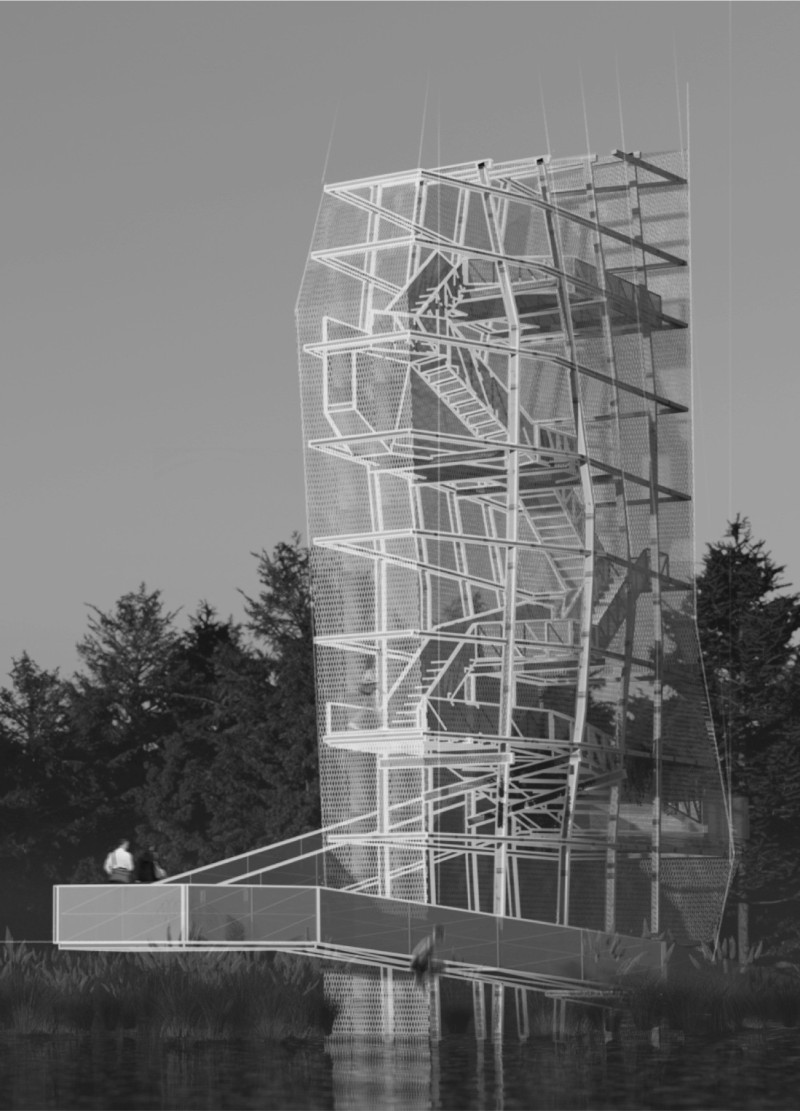5 key facts about this project
Functionally, the project is designed to accommodate [mention the specific function, like residential living, offices, or cultural spaces], addressing the diverse needs of its users while promoting a sense of community and interaction. The layout prioritizes accessibility and flow, creating open spaces that encourage movement and engagement. This careful organization of space reflects a deep consideration for user experience, from communal areas that foster social interaction to private zones that provide solitude and comfort.
A significant aspect of the design is the way it interacts with light and nature. Large glass windows dominate the facade, allowing natural light to flood the interiors and creating a visual connection between the indoors and outdoors. This feature not only enhances the aesthetic quality of the spaces but also promotes energy efficiency, minimizing the need for artificial lighting during the day. Additionally, the project incorporates outdoor areas that offer users a chance to retreat into nature, blurring the boundaries between built and natural environments.
The materiality of the project deserves attention, as it reflects both practicality and sensitivity to the context. The use of local materials, such as [list the primary materials used, e.g., wood, stone, and concrete], underscores a commitment to sustainability and a contextual response that honors the local architectural language. The textures and colors of these materials complement one another, establishing a cohesive visual identity while ensuring durability and low maintenance. Such choices demonstrate an understanding of environmental impact and aim to create a building that ages gracefully over time.
Unique design approaches are evident throughout the project. For instance, the architects may have adopted an open-plan concept that fosters flexibility and adaptability, allowing the space to evolve alongside its users. This approach aligns with current trends in architecture that prioritize adaptability in response to changing lifestyle needs. Additionally, the incorporation of green technology, such as solar panels or rainwater harvesting systems, reflects a forward-thinking attitude towards sustainability, serving as a practical model for future developments.
The project's exterior is characterized by a harmonious palette that resonates with its natural surroundings. The angular forms and gently sloping roofs could evoke a sense of movement, reflecting the dynamic nature of the environment it occupies. Landscaping complements the structure, with native plants and trees carefully chosen to enhance the setting without overwhelming it.
This architectural project stands as a testament to the thoughtful integration of form, function, and materiality. By considering not only the immediate needs of its users but also the broader environmental context, this design contributes meaningfully to the architectural discourse within its locality. The careful attention to detail in the overall composition, coupled with innovative design strategies, positions this project as a noteworthy example of contemporary architecture.
Readers are encouraged to explore the project presentation further for more comprehensive insights into its architectural plans, sections, and designs. Delving deeper into these elements will reveal the full depth of the project’s architectural ideas and the potential it holds for influencing future developments.


























